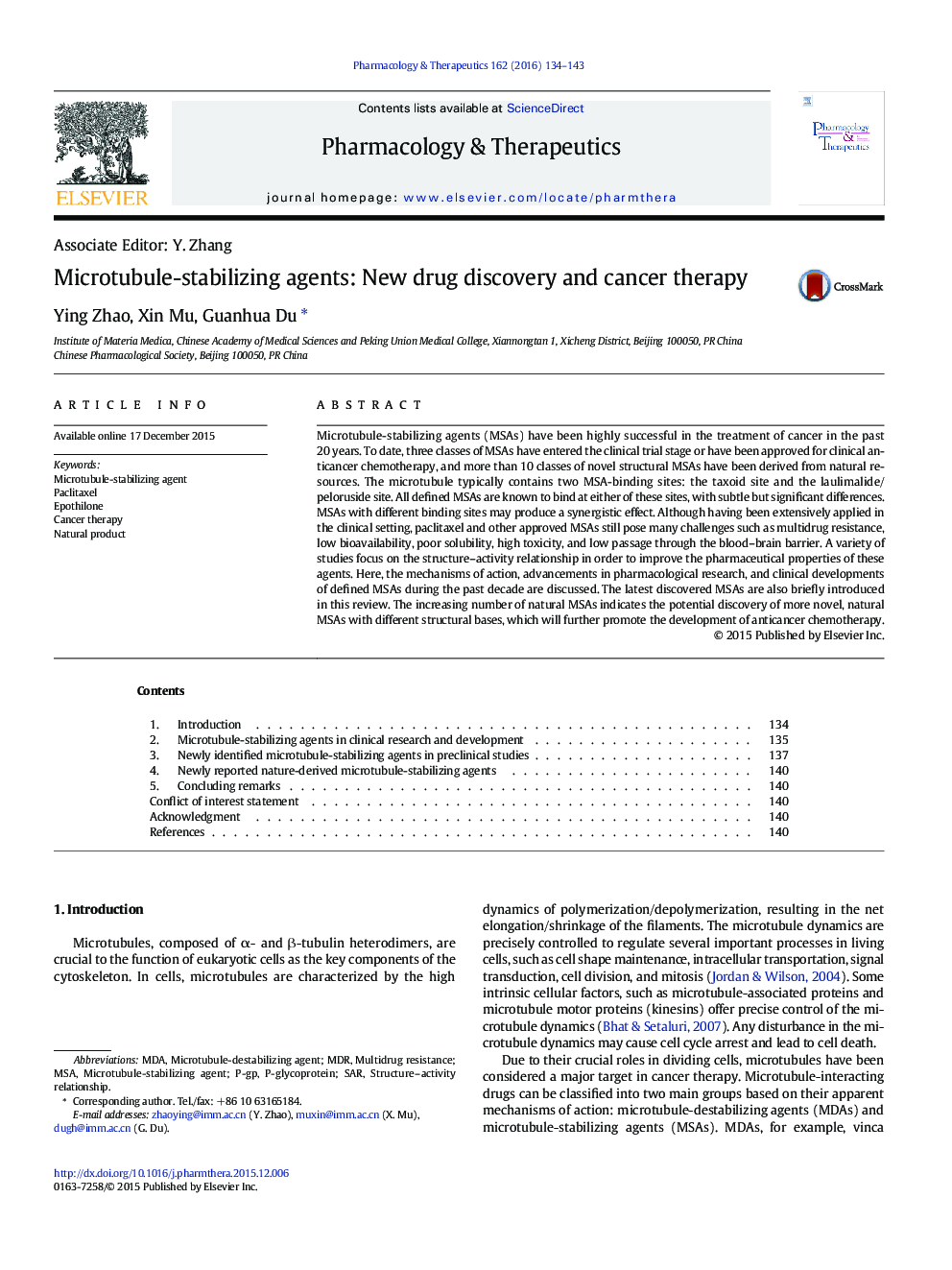| Article ID | Journal | Published Year | Pages | File Type |
|---|---|---|---|---|
| 2563078 | Pharmacology & Therapeutics | 2016 | 10 Pages |
Microtubule-stabilizing agents (MSAs) have been highly successful in the treatment of cancer in the past 20 years. To date, three classes of MSAs have entered the clinical trial stage or have been approved for clinical anticancer chemotherapy, and more than 10 classes of novel structural MSAs have been derived from natural resources. The microtubule typically contains two MSA-binding sites: the taxoid site and the laulimalide/peloruside site. All defined MSAs are known to bind at either of these sites, with subtle but significant differences. MSAs with different binding sites may produce a synergistic effect. Although having been extensively applied in the clinical setting, paclitaxel and other approved MSAs still pose many challenges such as multidrug resistance, low bioavailability, poor solubility, high toxicity, and low passage through the blood–brain barrier. A variety of studies focus on the structure–activity relationship in order to improve the pharmaceutical properties of these agents. Here, the mechanisms of action, advancements in pharmacological research, and clinical developments of defined MSAs during the past decade are discussed. The latest discovered MSAs are also briefly introduced in this review. The increasing number of natural MSAs indicates the potential discovery of more novel, natural MSAs with different structural bases, which will further promote the development of anticancer chemotherapy.
